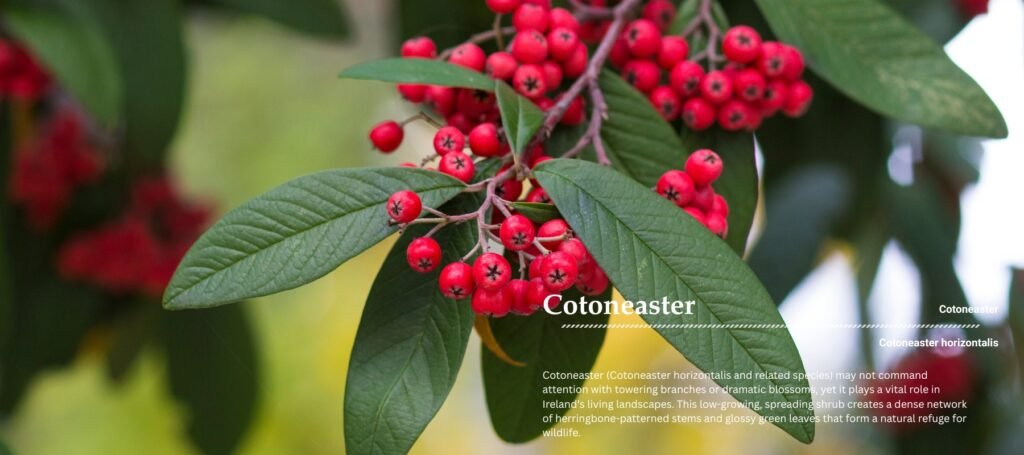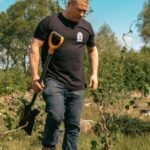A Source of Nectar and Colour
In late spring, Cotoneaster produces clusters of small, delicate flowers in soft shades of white and pink. Though modest in size, these blooms are a magnet for bees and other pollinators, providing a rich and accessible nectar source when many native flowers are yet to bloom.
As the seasons turn, the flowers give way to bright red berries that shine against the green leaves. These berries stay on the branches into winter, providing food for thrushes, blackbirds, and other berry-loving birds. Cotoneaster bridges the gap between seasons, feeding life when other sources fade.
Shelter and Stability
The dense, twiggy growth of Cotoneaster offers ideal nesting cover for small birds and safe passage for insects and ground-dwelling creatures. Its evergreen or semi-evergreen varieties provide protection throughout the year, keeping life sheltered during cold or stormy weather.
Beyond its value to wildlife, Cotoneaster’s spreading roots help stabilise soil and prevent erosion on slopes and banks. In this way, it acts as both a habitat builder and a protector of the land itself, strengthening the foundation of the ecosystem.
A Modern Ally for Biodiversity
Unlike some of Ireland’s ancient native trees, Cotoneaster does not carry old myths or folklore. Its story is a modern one, rooted in practical ecological value. In gardens, hedgerows, and natural planting projects, it has quietly become a favourite among conservationists and pollinator advocates.
Its ability to grow in poor soil, tolerate harsh conditions, and attract wildlife makes it an unsung hero of biodiversity. Cotoneaster demonstrates that even the smallest, most unassuming plants can play a major role in supporting life.
A Subtle but Powerful Contribution
Planting Cotoneaster may not seem as grand as planting an oak or a birch, but its impact is profound. Each shrub you help us grow provides nectar for bees, berries for birds, and roots that hold the land firm. It is a small but essential part of the bigger picture, the balance of nature that keeps Ireland’s landscapes alive.
Through Grown Forest, your support brings these quiet contributors back into focus. Together, we are creating not only woodlands but interconnected habitats where every plant, no matter how humble, has a part to play in sustaining life.

